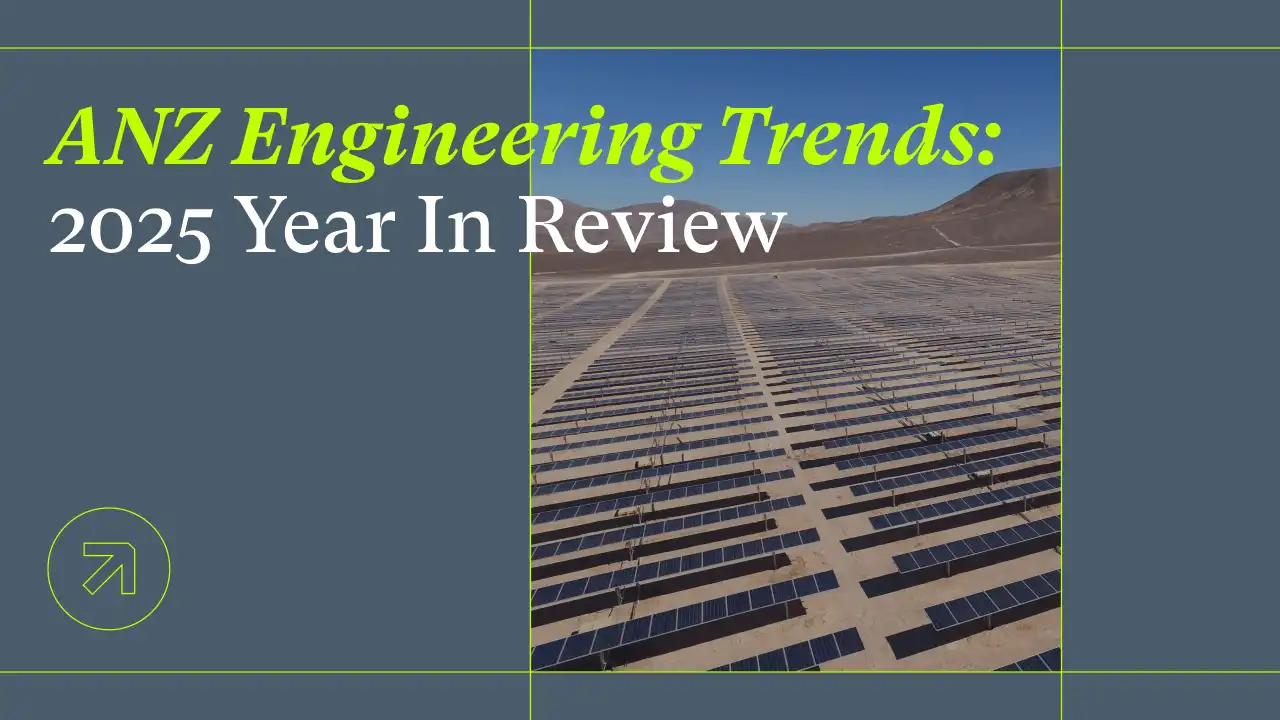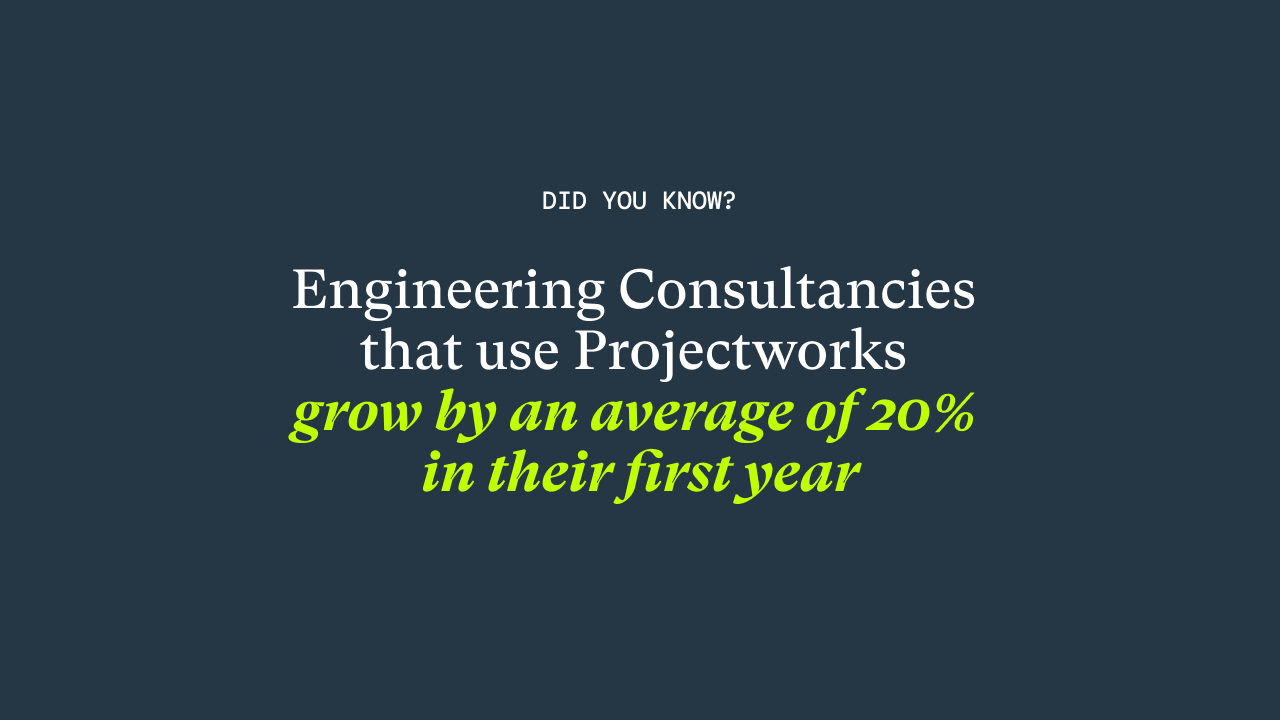2025 In Review: The Trends Shaping AU & NZ Engineering Firm Growth

In 2025 for the Engineering Sector down under, pipeline was the conversation irrespective of what side of the ditch your firm sat on. In Australia the pipeline grew quickly across energy, transport, water and social infrastructure. However, turning that momentum into consistent, profitable delivery was still hard for many firms. In New Zealand the public pipeline only became visible toward the end of the year. It was a tougher run, and leaders had to think differently about growth. The firms that moved ahead in both markets built a high performance delivery engine and ran it with calm discipline, thanks to visibility of all key project and business profitability metrics.
Engineering Capacity, Not Just Demand, Set The Ceiling
National spending stayed high, but human capacity set the limit. Senior engineers continued to remain scarce, hiring took longer, and employee retention costs climbed. Industry bodies pushed for easier skilled migration and faster accreditation to ease the pressure. In the meantime firms freed up hours they already had. They cut back on status meetings, cleaned up handoffs, standardised checklists, and reused designs where it made sense. They protected design review time so seniors were not spread too thin. Some firms smoothed the peaks and troughs with cross-Tasman teams, as well as saying no to low-margin work that would clog the bench. These habits kept fee recovery up, reduced surprises, and helped projects keep moving.
The Big Question – How Will AU & NZ Engineering Firms Grow Without Hiring More People?
The talent shortage is not going away, so the harsh reality is firms just can’t easily hire their way to scale. It’s a think different moment if you want to win – growth will come from changing how you win and deliver work. Many firms narrowed their bids to the work they could deliver at pace and price with confidence. They resource planned to the capacity they actually had, and lifted output per person by removing admin, standardising repeat tasks, and reusing proven solutions.
Use of AI and PSA Software in Engineering Eased Talent Shortage Pressure
Across Australia and New Zealand, AI mattered only when it proved its value. If it gave engineers more time for design, coordination, or QA, it stayed. If it did not, it was dropped. It is a new, sometimes uncomfortable muscle to build, but it is critical for growth. Firms that use the right tools well can create room to grow without adding headcount, protect senior staff from overload, and move faster than competitors who rely on hiring alone.
Regional spotlights – What Fuelled Engineering Firm Growth in 2025
Engineering in Queensland: Transmission Meets Games-Driven Precincts
The state became a bellwether. CopperString and Brisbane 2032 packages turned into real work, yet phasing and budget resets kept shifting dates. Winners bid in modules, built change handling in from day one and showed weekly progress from week two rather than saving updates for month two.
New South Wales: Approvals Advanced But The grid Set The Pace
Large wind and battery projects cleared approvals, but connection capacity and sequencing set the pace. Firms that paired strong client side engineering with grid connection know how set realistic schedules and held them.
Victoria: Big, Steady Spend With Capacity As The Constraint
Victoria continued to invest in transport and precincts. The main constraint was people, not the work itself. Firms that matched plans to real capacity with their resource management software avoided stop-start delivery.
South Australia – Reliability Was The Priority While The Grid Evolved
Reliability stayed front of mind while Project EnergyConnect progressed. Torrens Island B continued to support stability. The takeaway was straightforward. Projects moved on schedule when they could plug into enough reliable power.
Western Australia – SWIS Demand And Rail Reshaped The Map
SWIS demand kept climbing as industry electrified and critical minerals plants scaled up. Big batteries at Kwinana and Collie came online in stages. METRONET kept reshaping Perth’s rail network. Firms that understood the grid’s limits, what storage can and cannot do and the phasing of rail works avoided rework and won repeat work.
New Zealand – Visible pipeline. Slow spending. Export Mindset.
The pipeline was public through Te Waihanga, yet approvals and funding moved slower than expected. Benches and cash felt the strain. Firms built new growth strategies by tapping into heavy Australian pipelines, diversifying services and all-the-while staying close to cash with a close eye on their project and business profitability metrics.
How PSA Software helped Kiwi & Aussie Engineering Firms Maximise Profitability
The firms that grew kept things simple and visible. They set weekly rhythms the whole business could trust and used PSA software to enable them. What finished, what slipped, what happened each week and who owned it. They used resource management software to plan around the people they actually had, not the team they hoped to hire. Small problems were found early and fixed.
Growth strategies for ANZ Engineering Consultancies Heading Into 2026
Winning next year will not come from bigger pitches. It will come from small and medium sized firms that have differentiated expertise, and who use their agility to move faster than competitors on areas like AI adoption. They’ll deliver more with the same amount of people, prove progress with simple facts, plan work around real limits, use AI to take the drag out admin, and build a reputation as a firm that can be relied on to deliver. Do these things and you grow. Ignore them and you will spend 2026 explaining delays, write-offs and missed targets.

Where Projectworks PSA Software fits
Growing an Engineering Firm is far easier when the core systems sit together. A modern PSA software platform connects resource management, time and expenses, invoicing software and reporting in one purpose built platform for consultancies. Projectworks does exactly that, and is used by hundreds of engineering firms across Australia and New Zealand. If you want the weekly rhythm, the real time view and the calmer delivery engine described here, we can help you get there.
Related Articles

Scaling a Consulting Firm: The Cheat Sheet Every Consulting Leader Needs
Scaling a consulting firm isn’t theory for us - it’s lived experience. We've developed a play-by-play cheat sheet that comes from years of leading and growing firms through every messy, exhilarating stage of the journey. We've made every mistake along the way, which means you don’t have to.

.webp)